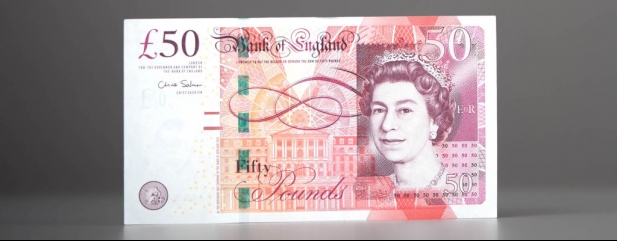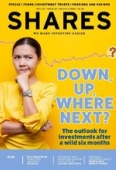Archived article
Please note that tax, investment, pension and ISA rules can change and the information and any views contained in this article may now be inaccurate.
As shares break new records what is the market discounting?

The coronavirus crisis has seemingly been absorbed by the market in stages as the scale of the economic damage has become apparent.
According to data analysed by Bank of America the broad S&P 500 index took only 22 days to fall by 30% from its record high, the fastest rate in history.
The International Monetary Fund expects the global economy to contract 4.9% this year, the worst downturn since the Great Depression, before rebounding 5.4% in 2021. It expects the UK to see a 10.2% contraction compared with 8% in the US.
Yet after bottoming on 23 March the S&P 500 index actually marked another record high by turning tail and rallying 38% in just 50 days.
WHAT’S BEHIND THE MARKET MOVEMENTS?
A popular narrative has emerged to explain these unusual events and is based upon a mixture of historical precedent, massive central bank and government stimulus efforts and so-called ‘animal spirits’.
Previous health crises have tended to have a sharp but temporary effect on the economy, so why not this time, goes the thinking.
Investors have effectively ‘written-off’ 2020 earnings and are excitedly eyeing a bounce next year. It seems reasonable to ask whether the stock market has lost its collective mind, and if not, what current prices are telling investors.
IS IT RATIONAL?
Let’s say that a friend agrees to pay you £1,000 over the next 20 years in equal £50 annual payments.
Let’s also assume that your friend gets laid-off and can’t pay you the £50 at some point along the way. Your friend apologises, but bad things happen from time to time and she promises to continue paying you £50 in the future. It turns out she keeps
her promise.
In effect you end up out of pocket by £50 which as a percentage of the £1,000 is 5%. You were concerned about getting the balance of the promised money and lowered your expectations accordingly. But that fear turned out to be misplaced and in any case you convince yourself that 5% short isn’t that bad over such a long timeframe.
Now, let’s use earnings in the same example, and say £50 is the current earnings of the UK stock market which is worth £1,000. We can see that the market is valued at a price-to-earnings ratio (PE) of 20 times (£1,000 ÷ £50 = 20).
We have already seen that removing a whole year’s worth of earnings reduces the total value received over 20 years by only 5%. That would be even smaller over longer durations.
The important thing to understand about shares which makes them unique is that they can exist for a long time and potentially produce an endless stream of earnings. That is why they are sometimes referred to as long duration assets.
As long as investors maintain the same level confidence in shares’ long term potential, any short-term dip in earnings will have minimal impact on the value of those earnings. It takes a more sustained hit to earnings and/or a loss of confidence to create long bear markets.
Confidence is expressed through the PE which acts like a neurotic friend with big mood swings. Some days the market will effectively offer to buy your shares for a PE of 30, and other days it might be as low as 12.
BACK TO THE FUTURE
How much of the 30% market fall in March was down to fear – the PE falling – and how much was related to the actual fall in future earnings won’t be known for some time and the same applies to the recovery.
Investors appear to have ‘taken the long view’ by pushing markets back towards pre-crisis highs with the FTSE 350 only 18% below the price levels at the end of 2019.
The bet being made is that economies will get back to ‘normal’ once a vaccine is found while mortality-reducing therapies such as dexamethasone can reduce the need for national lockdowns in the immediate future.
Equities aren’t priced for sustained damage to the economy that would arise from a second wave of the virus, but that has to be balanced by the commitment of governments and central banks to ‘do whatever it takes’ to maintain confidence in the economy and the markets.
How to work out what the FTSE 350 is pricing in
The Gordon Growth Model approach to valuation was named after Myron J. Gordon of the University of Toronto and dates back to the 1950s. It is useful because of its simplicity, but it should be stressed that using unrealistic inputs will result in unreliable outputs.
All that is needed is the forecast dividend, index level and cost of equity. For the FTSE 350 this works out respectively at £110.80 per share, 3,463 and 8% based on data from Stockopedia. Cost of equity is essentially the return that equity owners require to compensate them for the risk of owning shares.
It can be calculated by taking the dividend yield and adding it to dividend growth rate. Historically, on average over the last 100 years UK dividends have grown 4.8% a year and the current estimated yield is 3.2%, equating to an 8% cost of equity.
Plugging these numbers into the equation shows that the FTSE 350 is trading at a price which implies a future growth rate of 4.8%, bang in line with the historical average. It’s best to use ranges rather than rely on one scenario.
If you think the growth rate will average 4% in future the FTSE 350 should trade at 2,770, 20% lower. If you believe growth will average 5.5%, it equates to a level of 4,432, around 28% higher than current levels.
Market value = Dividend per share ÷ (Cost of equity - Expected growth rate)
Important information:
These articles are provided by Shares magazine which is published by AJ Bell Media, a part of AJ Bell. Shares is not written by AJ Bell.
Shares is provided for your general information and use and is not a personal recommendation to invest. It is not intended to be relied upon by you in making or not making any investment decisions. The investments referred to in these articles will not be suitable for all investors. If in doubt please seek appropriate independent financial advice.
Investors acting on the information in these articles do so at their own risk and AJ Bell Media and its staff do not accept liability for losses suffered by investors as a result of their investment decisions.

 magazine
magazine









